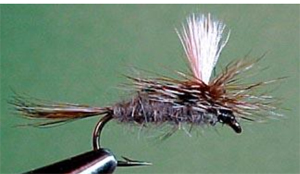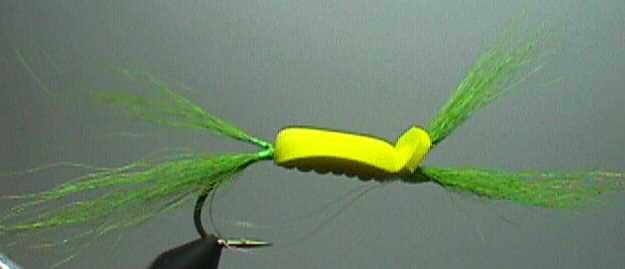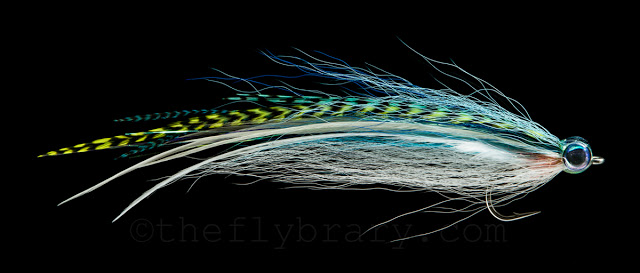United Fly Tyers of Rhode Island, Inc.
Insert Headline
October Newsletter
Adams Parachute
Tapply's Frog Gurgler.
The Parachute Adams is a legendary fish catcher that no serious fly angler should ever be without. There are a great many attributes to the Parachute Adams but most of its legendary status is due to its unique ability to imitate the numerous members of the mayfly and caddis families. If no hatches are present on the water the Parachute Adams can be equally successful as a searching pattern.
The Parachute Adams can be productive wherever you decide to drift it. Slow or slack water presentation is one of the Adams’ specialties. The unique parachute post design allows the fly to ride lower in the surface film creating a realistic silhouette to on-looking trout. In these slow water conditions trout have an extended time to examine flies drifted overhead so using flies that more closely resemble the natural insects, like the Parachute Adams, gives you the best chance to consistently catch fish. For the faster runs or riffles the horizontal hackle will allow the fly to not only ride lower but have better floatability keeping it high and dry longer than most other standard dries.
To fish the Parachute Adams, simply employ the same tactics you would for any other standard dry fly. Find a turbulent run or sunken structure and cast across and upstream of this target. Gently allow the fly to drop to the waters surface and proceed to drift downstream. On the drift downstream towards your target or for the duration of the run mend the fly line so that the fly achieves a drag free drift for as long as possible. A good idea is to swing the fly back towards a position behind at the end of the drift just to give any slow trailing fish a last chance to bite.
The Deceiver style of fly as originally designed by Lefty Kreh is one of the world's most popular saltwater flies, and for good reason. This fly has been catching a broad variety of saltwater gamefish for years. The deceiver has also evolved into numerous variations to suit different game fish and fishing locations since its original design. However, at its most basic, it still includes a long hackle tail, and bucktail wings on the top and bottom of the fly.
John McCall will be tying aversion fo this fly using a flat wing style.
According to William Tapply, author of Bass Bug Fishing, this fly was created by Boston's Jack Gartside, both famous and notorious as an innovative fly tier, globe-troting angler, reconteur, and poker shark. "Jack's Gurgler is a staple among East Coast striped bass and bluefish anglers, writes Tapply, but he also catches tarpon and bonefish on Gurgler Variations. However, he designed it originally for freshwater bass."
The Gurgler in the tying sequence is the way Tapply ties it and his tie is very similar to the way Gartside ties the fly.
I like to use the Mustad 3366 for my Gurglers but you can use any standard straight-eye bass bug or saltwater hook. The hook used in the tying sequence is a Mustad 3366 in size 2.
Any tier with average tying skills will have no problem following the step-by-step instructions that appear in the tying sequence that follows.
If you would like to tie more of Jack Gartsides creations check out his web site on the "Web Links" page. Once you are there, go to the site map on the navagation bar and click on fly patterns.






